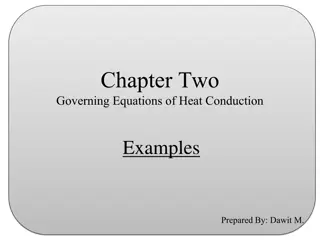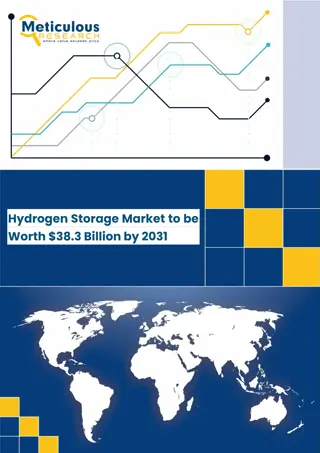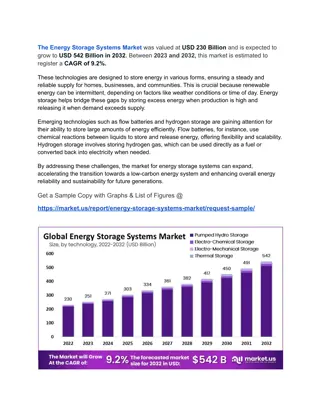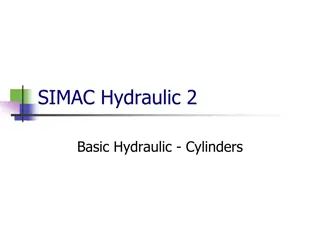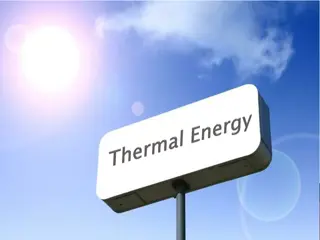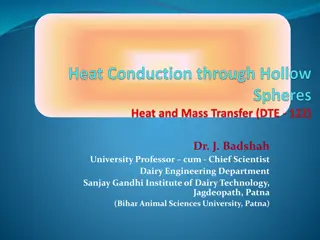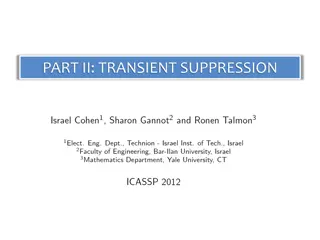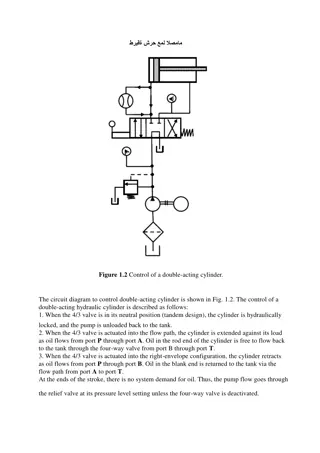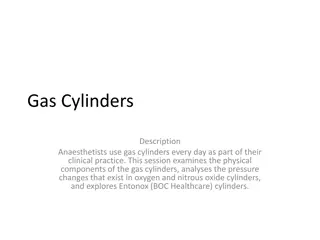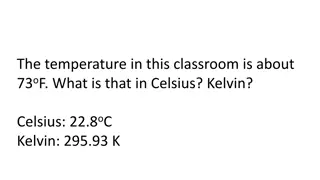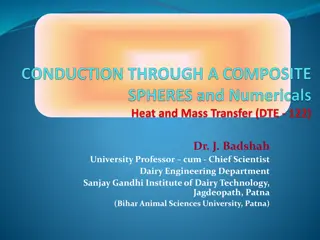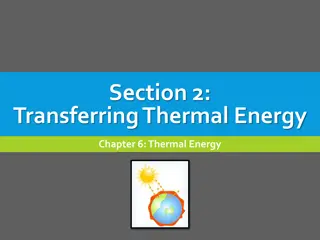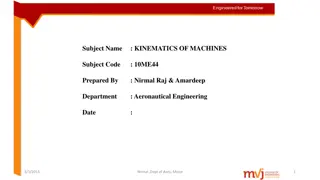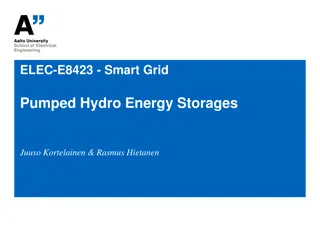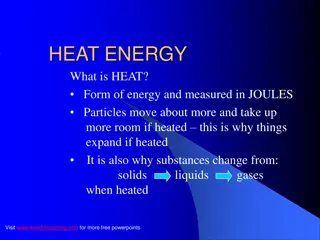Transient Conduction in Thermal Energy Storage Units and Cylinders
Explore examples of transient conduction phenomena in thermal energy storage units, cylinders, and spheres. Learn how to calculate time durations, temperature changes, and energy removal rates during these heating and cooling processes. The examples cover scenarios involving aluminum slabs, oil baths, convection coefficients, and material properties like thermal conductivity and specific heat. Gain insights into practical applications of transient conduction in various engineering contexts.
Download Presentation

Please find below an Image/Link to download the presentation.
The content on the website is provided AS IS for your information and personal use only. It may not be sold, licensed, or shared on other websites without obtaining consent from the author. Download presentation by click this link. If you encounter any issues during the download, it is possible that the publisher has removed the file from their server.
E N D
Presentation Transcript
Chapter Five Transient Conduction Examples Prepared by: Dawit M.
Outline Example 1: Use of LCM Example 2: Use of One-term Approximate Solution for Infinite Cylinder Example 3: Use of One-term Approximate Solution for Sphere Example 4: Use of One-term Approximate Solution for Sphere
Example 1: Use of LCM 1. A thermal energy storage unit consists of a large rectangular channel, which is well insulated on its outer surface and encloses alternating layers of the storage material and the flow passage.
Contd Each layer of the storage material is an aluminum slab of width W = 0.05 m, which is at an initial temperature of 250C. Consider conditions for which the storage unit is charged by passing a hot gas through the passages, with the gas temperature and the convection coefficient assumed to have constant values of T = 6000C and h = 100 W/m2-K throughout the channel. (a)How long will it take to achieve 75% of the maximum possible energy storage? (b)What is the temperature of the aluminum at this time?
Example 2: Use of One-term Approximate Solution for Infinite Cylinder 2. A long cylinder of 30-mm diameter, initially at a uniform temperature of 1000 K, is suddenly quenched in a large, constant-temperature oil bath at 350 K. The cylinder properties are k = 1.7 W/m K, c = 1600 J/kg K, and = 400 kg/m3, while the convection coefficient is 50 W/m2 -K. Calculate the time required for the surface of the cylinder to reach 500 K.
Example 3: Use of One-term Approximate Solution for Sphere 3. Stainless steel (AISI 304) ball bearings, which have uniformly been heated to 850 C, are hardened by quenching them in an oil bath that is maintained at 40 C. The ball diameter is 20 mm, and the convection coefficient associated with the oil bath is 1000 W/m2 K. (a) If quenching is to occur until the surface temperature of the balls reaches 100 C, how long must the balls be kept in the oil? What is the center temperature at the conclusion of the cooling period? (b) If 10,000 balls are to be quenched per hour, what is the rate at which energy must be removed by the oil bath cooling system in order to maintain its temperature at 40 C? k = 1.7 W/m K, c = 1600 J/kg K, and = 400 kg/m3
Example 4: Use of One-term Approximate Solution for Infinite Cylinder 4. A long 20-cm-diameter cylindrical shaft made of stainless steel 304 comes out of an oven at a uniform temperature of 600 C. The shaft is then allowed to cool slowly in an environment chamber at 200 C with an average heat transfer coefficient of h = 80 W/m2 C. Determine the temperature at the center of the shaft 45 min after the start of the cooling process. Also, determine the heat transfer per unit length of the shaft during this time period. The properties of stainless steel 304 at room temperature are K = 14.9 W/m C, = 7900 kg/m3, Cp = 477 J/kg C, and = 3.95 X 10-6 m2/s
Thank You! Any Question?






